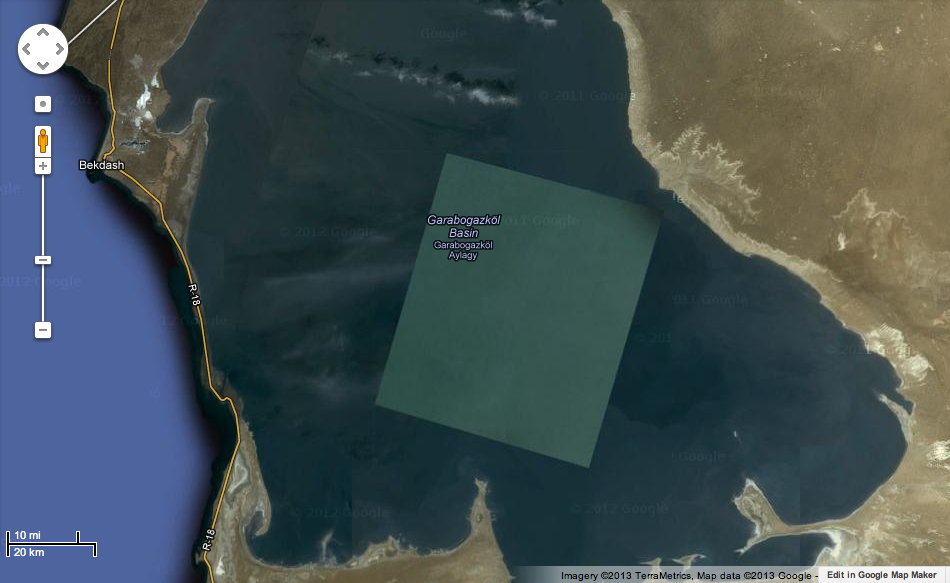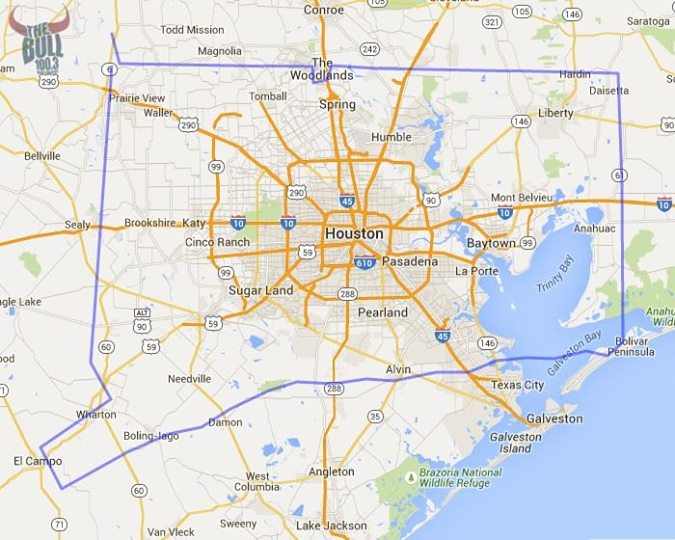The Garabogazköl Basin is a large body of water in Turkmenistan that connects to the Caspian Sea via a small strait. It is very shallow and, according to Wikipedia, ridiculously salty, with a salinity level of 35%, compared to 1.2% in the Caspian Sea and 3.5% in the overall ocean. This makes it the second-saltiest body of water in the world outside of Antarctica (saltier than the Dead Sea). While Turkmenistan harvests salt from the area (obviously), it sounds like a place that is not terribly interesting.
Except for what I will call the Rectangle. On Google Maps, what would otherwise be an unassuming, albeit huge, lagoon, with a total area of about 6,900 square miles, has a large rectangular area that is either much more shallow than the rest of the lagoon, is somehow obscured, or is just not photographed as well.

Via Google Maps
There is a very large, probably 40 mile by 50 mile, rectangular area in the lagoon, with an odd shadow in the top right corner. This time, my attempts to Google my way to an answer only yielded confirmation that this is, in fact, a mysteriously obscured or incomplete area. In all likelihood, the area looks different because there is no point in going to a lot of trouble to take satellite photos of the middle of a lagoon filled with water that is too salty even for sore throat sufferers.
Still, maybe something unusual is going on. Google Maps has been known to obscure areas for security purposes.
For my part, I still hold out hope it is a breeding and training area for a new race to inhabit the oceans, sort of like Sea-Monkeys but more science-fiction-y.
!["Monkey Sea, Monkey Do" by *JaxGraphix [CC BY-NC-ND 3.0], via deviantart.com Monkey_Sea__Monkey_Do_by_AbandonedUntilDeath](http://crypticphilosopher.com/wp-content/uploads/2013/03/Monkey_Sea__Monkey_Do_by_AbandonedUntilDeath.jpg)
No, not *that* kind of sea monkey! (via jaxgraphix.deviantart.com)
Photo credit: “Monkey Sea, Monkey Do” by *
JaxGraphix [
CC BY-NC-ND 3.0],
via deviantart.com.




!["Monkey Sea, Monkey Do" by *JaxGraphix [CC BY-NC-ND 3.0], via deviantart.com Monkey_Sea__Monkey_Do_by_AbandonedUntilDeath](http://crypticphilosopher.com/wp-content/uploads/2013/03/Monkey_Sea__Monkey_Do_by_AbandonedUntilDeath.jpg)